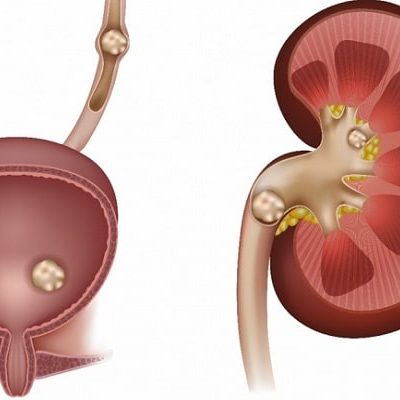What are the symptoms of kidney stones?
If you have a very small kidney stone that moves easily through your urinary tract, you may not have any symptoms, and may never know that you had a kidney stone.
If you have a larger kidney stone, you may notice any of the following symptoms:
- Pain while urinating
- Blood in your urine
- Sharp pain in your back or lower abdomen
- Nausea and vomiting
If you are having any of these symptoms, contact your health care provider.


Types of kidney stones
- Calcium stones are the most common type of kidney stones. They are usually made of calcium and oxalate (a natural chemical found in most foods), but are sometimes made of calcium and phosphate.
- Uric acid stones form when your urine is often too acidic. Uric acid can form stones by itself or with calcium.
- Struvite stones can happen when you have certain types of urinary tract infections in which bacteria make ammonia that builds up in your urine. Struvite stones are made of magnesium, ammonium and phosphate.
- Cystine stones are made of a chemical that your body makes naturally, called cystine. Cystine stones are very rare, and happen in people who have a genetic disorder that causes cystine to leak from the kidneys into the urine.
Kidney stones can be as small as a grain of sand or as large–sometimes larger than–a pearl. They can stay in your kidneys or travel through your ureters (the tubes that go from your kidneys to your bladder), and out of your body with your urine. When a kidney stone moves through your ureters and out your urethra with your urine, it is called passing a kidney stone. A kidney stone can also get stuck in your urinary tract and block urine from getting through. When you pass a kidney stone or a large kidney stone blocks the flow of your urine, it can be very painful.


